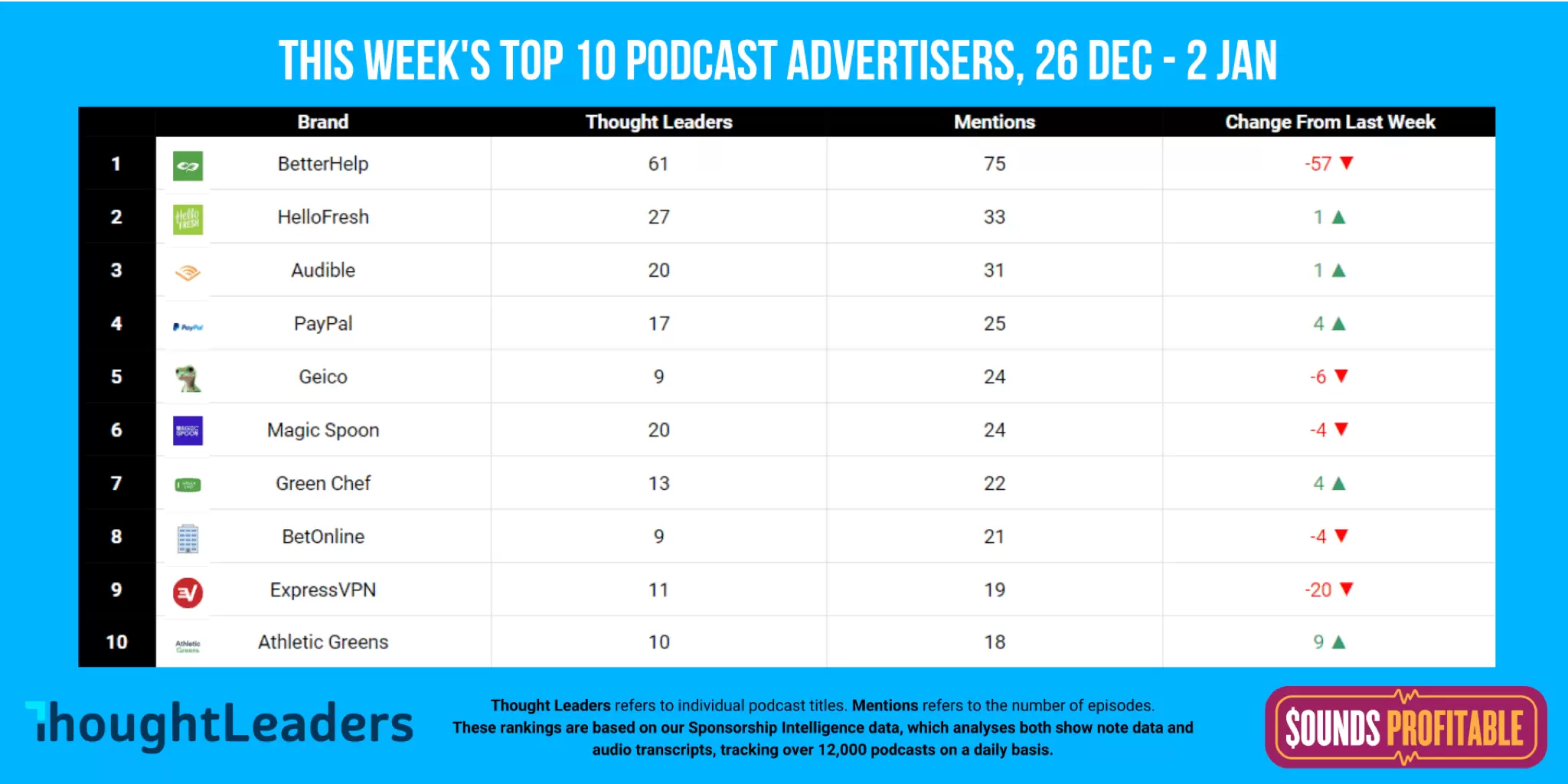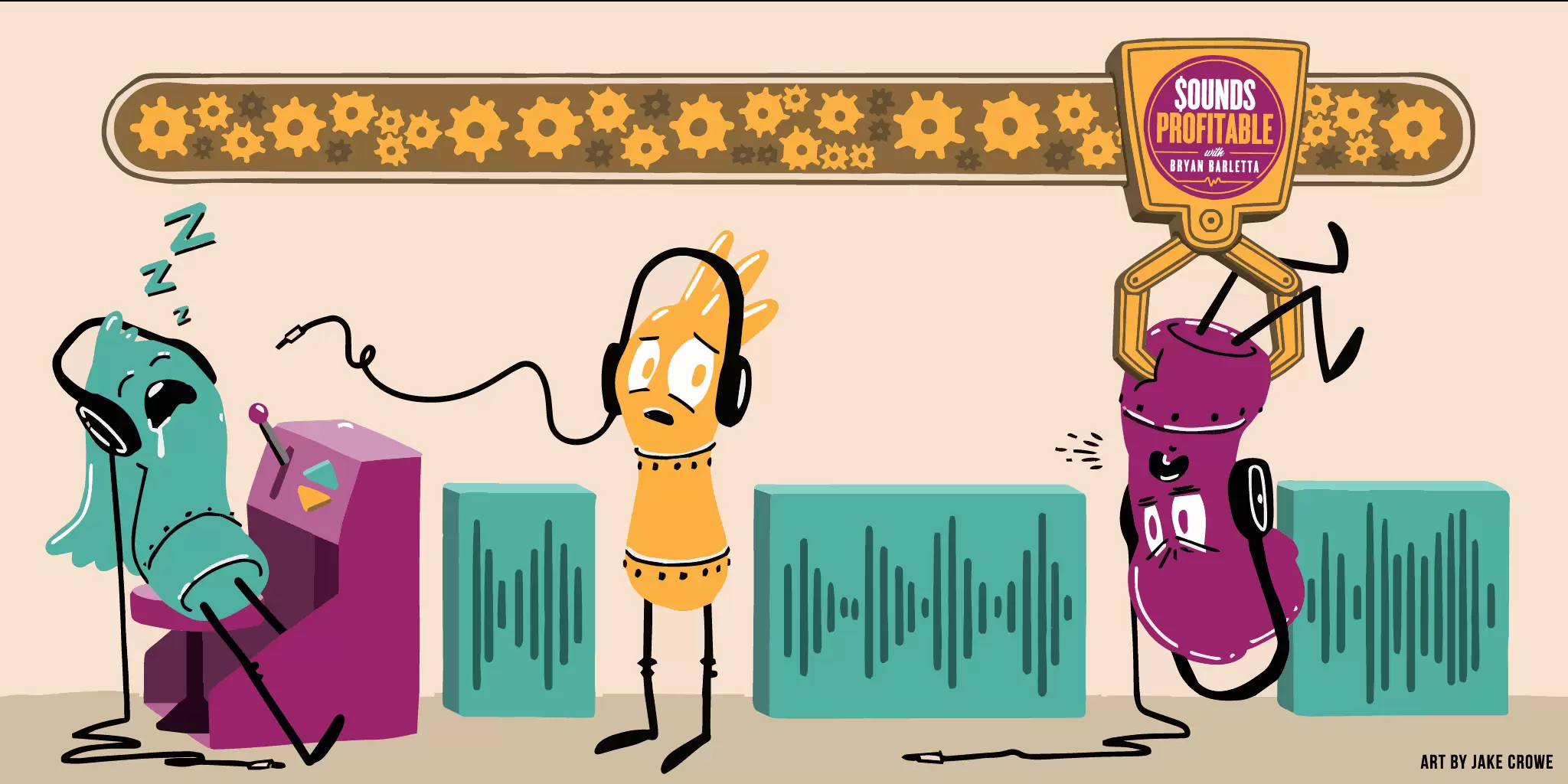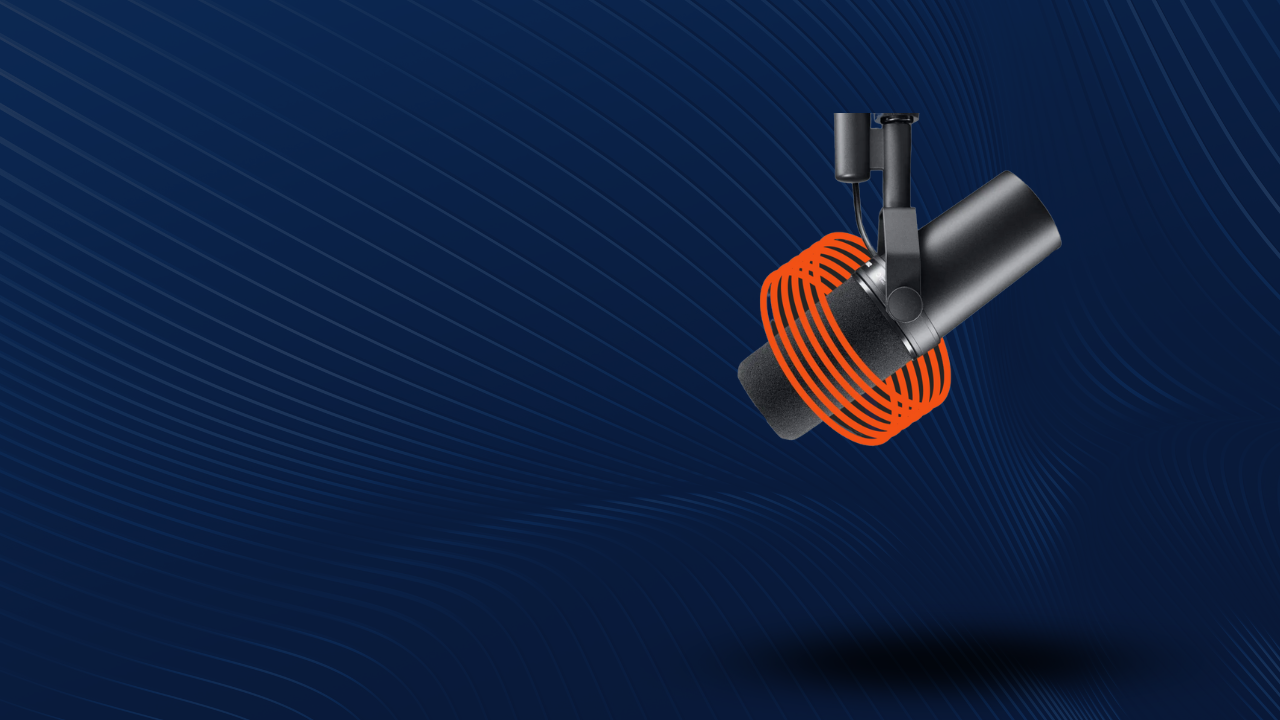Introduction
At the risk of offending the “we’ve gotten along for this long without it” crowd, dynamic ad insertion (DAI) is at the absolute core of all things podcast adtech.
Granted, a lot of the money currently spent on podcast advertising goes to “baked-in” ads. But the majority of the technological growth and advancement in this space revolves around DAI.
However, that doesn’t mean it’s easily understood. Since nobody owns the patent on the technology that enables DAI, and the reality that there’s no governing marketing entity directly representing DAI and its use, what we’re left with is a handful of independent companies presenting their own take on DAI in ways that are most favorable for them. It’s not surprising then that podcast ad serving platforms present DAI as a tool to provide their clients with additional revenue opportunities such as programmatic ad buys or second-seat ad seller solutions. This is, in part, because they get a cut of these types of automated ad buys, when they don’t exactly make any additional revenue when clients self-serve their own ads through DAI.
But DAI’s capabilities go far beyond the low-hanging fruit that is programmatic and second-seat seller relationships. There are many other far more interesting—and lucrative—paths available to podcast publishers like you who implement a DAI strategy across their episodes.
This week, we’re going to focus on why each and every podcast publisher looking to get the most out of podcast advertising in 2021 and beyond absolutely needs to design and implement a DAI strategy as soon as possible.
Different Methods of Ad Delivery
Before we begin, I want to make sure we’re all up to speed on the differences between baked-in ads and dynamically inserted ads. Let’s use everyone’s favorite daily podcast news podcast as an example.
When James Cridland finishes editing the Podnews daily podcast, the file he uploads for listeners to download already has the ad in it. The episode starts off with James narrating the words “The latest from Podnews.net with Memberful”, and then he narrates the rest of the episode. The file he uploads to his media server is the exact same file that every single podcast listening app will serve to listeners. That’s a host-read baked-in ad.
Focusing on the baked-in part, the most important thing to understand is the file is always the same, and the baked-in ad for Memberful will always be a part of that .mp3 file (assuming James never uploads a replacement .mp3 file for that episode). The term host-read simply means that James—the host of the show—voiced the ad copy. James could easily ask me to voice the ad spot he later puts into the final file, resulting in an announcer-read baked-in ad.
I am generalizing a bit. No need for the team over at Barstool Sports to reply back to let me know that when they offer baked-in ads to their advertisers, they focus heavily on weaving the ad throughout the entire episode. And they’re right; high-touch placements that blur the line between episode content and advertising content isn’t easily supported by DAI. But to me, that approach is closer to sponsored content than baked-in advertising. So for the purposes of this article and until we all can agree on terminology, when we discuss baked-in ads, we mean specifically-designed ad breaks within the contents of an episode.
With DAI, the process is quite a bit different. The core content of the episode, minus any ads, is uploaded to the hosting platform. Using the interface of the hosting platform’s adserver, the publisher then sets markers—points at various timestamps— within the audio file that identifies where ads are to be inserted. The publisher then uploads the audio of the individual ads by themselves to the platform, associates them with a (or creates a new) campaign within the platform’s adserver, and targets them to one or more episodes of the show. Then every time a new download happens, between the time the listener presses play/download and when they hear the first bit of the episode, the adserver kicks in and determines which, if any, ad specifically should be placed within the audio file at the appropriate markers. The end result is a seamless audio file, with ads dynamically inserted into the episode.
Podnews does not use DAI currently. But if James did use DAI, he could, for example, serve a 0:00 pre-roll announcer-read ad from AT&T (DAI announcer read) at the start of any of his episodes. This is likely the most familiar DAI execution you’ve come across.
But DAI allows for way cooler options than that!! James could just as easily take the first 9 seconds of his episode, which includes his host-read ad and the “canned” intro to Podnews, and treat the whole bit as dynamically inserted content! Instead of baking-in those 9 seconds, he’d leave it out of the “core content” of the episode and instead upload it to his adserver as an ad, and then target that pre-roll at one or or more episodes (DAI host-read). This would give James more flexibility. But from the POV of us, the listeners, we’d hear no difference. Assuming DAI adtech was implemented and executed properly, of course.
Now that we understand the basic differences between baked-in ads and placed via DAI, let’s explain what makes DAI so valuable.
No Added Cost
After reviewing the pricing for most of the major podcast hosting providers, I discovered that not a single one of them charges any additional fees for publishers to utilize their platform’s DAI system.
When a show achieves the number of downloads that make ad revenue a viable option, hosting platforms either charge on a cost-per-download model, a flat monthly fee, or for the amount of bandwidth consumed for all of those downloads. Running ads—either dynamically inserted or baked-in—won’t affect any of those variable costs.
If your hosting provider offers DAI, the price is already baked into whatever you’re paying. So you might as well use it!
Host Read 2.0
Most host-read placements could easily be handled in DAI instead of baked-in. And not just easily handled, but made better, with loads of value over the more permenant baked-in execution.
First off, it allows the host and editor to stay focused on episode content, offloading ad placement to an adops team. Breaking ad runs out doesn’t cause the podcast editor any more work beyond marking the ad insertion positions in each media file. They’re still going to edit the episode and the ads themselves. But once that’s done, they simply provide the episode file to the adops team for scheduling and monitoring to the terms of any campaign insertion orders or agreements. Division of labor, for the win!
Not to stretch your imagination but, let’s picture a world where the host says something offensive, causing an advertiser to pull out over brand safety concerns. Instead of taking down the episode’s media file, instructing the editor to go back to the source files and re-assemble an episode without the offending baked-in ad, waiting for that work to be completed, re-uploading the media file, and then deciding if you need to publish a CORRECTED episode for all to hear… DAI allows the adops team to stop serving the offending ad in seconds. In fact, anyone with the right access-level to the adserving platform can immediately take action, preventing any further downloads of that ad.
While publishers and advertisers continue to explore the truly impressive pre-emptive brand safety features available in podcasting, this emergency-brake-equivalent of reactive brand safety should be table stakes for all publishers.
Future Proofing Your Options
Using DAI to identify where an ad is placed within a podcast episode is cool, but pretty basic. Using the logic of DAI to determine what and how ads are placed is where the power of this adtech really shines.
Today, most podcast adservers offer waterfall methodology for ad prioritization. That means that an ad set to “priority 1” will be served before an ad set to “priority 2” at least as long as the “priority 1” ad is still available to serve. (Ads stop serving after, for example, they’ve hit their impression or spend cap.)
The problem with that methodology is that the only thing that matters is the priority. There’s no consideration for the CPM of each ad, which can (and does) impact publisher revenue. Nor does it care that the “priority 2” ad is hyper-targeted to only Austin, TX while the “priority 1” ad lacks any geotargeting. In essence, waterfall methodology lacks a competition component.
But with a solid and robust DAI implementation, adding competition or any new feature or update to a dynamic ad server is instantly available—without any additional work on the media files themselves. That means the same day your hosting platform issues a press release extolling their new features and your advertisers start calling you about using the feature, you can confidently say “yes, we can do that”, even if you need to brush up on how the feature actually works.
Ad Impression Tracking
There’s an open secret in podcast advertising everyone acknowledges but no one wants to talk about: Is anyone listening to these ads?
Sure, we can track downloads quite accurately. But just because an episode was downloaded, it doesn’t mean it was played. And if it was played, there’s no way to know if the listener stopped listening before the ad ran.
With DAI, it is possible to differentiate between an episode download and an ad download. The episode download is counted when at least one minute of the episode’s content has been downloaded by the listening app, while the impression download is counted only after the episode has fully downloaded through the portion of the episode where the ad was placed. And while this still isn’t a true listen, it is one step closer.
In practice, if a podcast episode contains three 30-second ads, but the download stops after the second ad, only two ad downloads would be tracked, and by IAB standards the download itself wouldn’t count. That is, of course, if the ads were handled through DAI.
If they were baked in, there would be no record of any ad download because the adserver has no knowledge of any ads. But it would count as a podcast download because 60 seconds of audio was downloaded, and the adserver has no way to tell the difference between content and ads.
Third-party tracking services have the same problem differentiating episode downloads vs ad downloads. Without DAI, the best they can offer is a prefix URL that fires when the episode download request has been made. They don’t know how much of the episode has been downloaded or even where the ads are in the episode. Unless, of course, those ads are served via DAI. In that case, the third-party service will only fire when the adserver has confirmed that an ad was downloaded.
Robust Reporting
If a publisher implemented a full DAI strategy today and then never served a single ad with it, I still think it would add substantial value in reporting.
Inventory Forecasting is a mythical beast of ad reporting that transcends podcasting. I have yet to encounter an industry that hasn’t struggled with accurate inventory forecasting. And while the offerings out there today might not live up to the dreams publishers struggle to articulate, the data collected today by implementing DAI, even if the “insertion” part is not used, will allow for seasonal and cyclical analysis when the feature finally matures in this industry.
But if you do choose to serve ads through DAI, there are already a number of fantastic reporting tools that provide far more value than a flat number of downloads that will make a major difference both for everyone from the adops team, account managers, sales people, and even leadership. Having the ability to see fill-rate or drill into availability inventory for a specific show or episode can provide a lot of great value for goal planning and the creation of new ad offerings.
Wrapping It Up
What I like most about DAI is the number of options it opens up for a publisher. Any DAI placement could be a host read ad for one listener, a direct-sold announcer-read ad for another, a promo for a new podcast from the same network, or even be a programmatic ad from a third-party ad server.
Publishers can always limit what type of ad can serve in which placements. But with a flip of the switch, a publisher could configure every single unfilled ad unit to call a programmatic partner to maximize per-episode ad revenue. Or they could add a pre-roll to every back-catalog episode promoting the book that the host just released.
DAI is about options, and included in those options is the choice to simply not serve any ads through DAI right now. But by taking the time to configure it correctly, that option is moments away, allowing a publisher to compete with unique offerings in a time where this space is getting more competitive.
In 2021 we’re absolutely going to push the limits of what too many ads in a podcast looks like. We’re going to explore the value of different ad lengths, sequential ads from the same advertiser, and hopefully dozens of other options that push the creative uses of podcast adtech to its limits. But by not implementing DAI at all, you’re sitting on the sidelines.
Even if you’re a small to midsize podcast publisher looking to take your ad strategy seriously, you should prioritize migrating to a hosting provider that provides at least assisted monetization solutions, but ideally full-fledged DAI.
And if you’re already relying on podcast advertising to monetize your podcast but you’re still baking in your ads—there’s no excuse. If your hosting platform does not have a clear plan to roll out DAI in the next few months, it is absolutely in your best interest to migrate to a hosting provider that takes podcast adtech seriously.
If you need a recommendation, definitely reach out.
Homework
The goal of Sounds Profitable is to educate and empower each of you. If we’ve had a chance to talk directly, you know that I am truly passionate about both adtech and podcasting. We learn through asking tough questions and discussing the answers. Armed with today’s new knowledge, I want to help you ask more questions. Please consider supporting Sounds Profitable through our Patreon.
And share this article on your social channels while asking your followers a question. Here are a few to try:
- Does your podcasting hosting platform offer DAI?
- If not, have you evaluated migrating to other hosting platforms?
- If yes, have you configured your podcasts for DAI?
- Do you have a defined ad placement strategy for your show?
- Have you considered what modifications would be needed to implement DAI?
- Are you able to meet your current reporting and third party tracking needs both internally and for advertisers?
- Have you missed out on any advertising relationships by not offering DAI?
Use the hashtag #SoundsProfitable. I’m curious what responses you get!
New Sponsors
It’s our goal to highlight the amazing people and companies that are helping Sounds Profitable keep the lights on. We’d like to personally thank our latest sponsors:
- MatchCasts helps brands and podcasters take the pain out of finding the right podcast to create campaigns that resonate with audiences. As Asia’s first podcast and audio advertising platform, MatchCasts helps brands go audio.
- SpokenLayer are experts in short form audio, from creation and distribution to monetization.
- Veritonic is the one platform marketers need to understand the best way to use sound. Veritonic is the audio intelligence platform.
- Claritas is a data-driven marketing company that helps companies know more about their best prospects & customers.
Special thanks to Podsights for returning as title advertiser!
We appreciate the support of all our sponsors, so please take a look at the full list below. If I can make an introduction for you to any of the sponsors, please don’t hesitate to reach out!
If you’d like to learn more about sponsorship or advertising with us, just hit reply!
Market Insights – with ThoughtLeaders

I’m excited to kick off the first issue of 2021 with our Market Insights section, sponsored by ThoughtLeaders. While their data is not a complete set, the directional value it provides is very interesting to me. I’m especially looking forward to seeing how the top 10 change from the final week of 2020 as we get further into 2021.
Product Deepdives
Our Product Deepdives are a detailed walkthrough of podcast adtech products, who they’re for and how they actually work. Last month, we learned all about Podscribe for Advertisers, which you can watch on demand for free.
On January 21st at 4pm ET, we’ll be premiering our January episode with where we’ll learn more about the Triton Digital Podcast Metrics product, including all the new features for advertisers. If you can’t make it for the live Q&A, we’ll have the video available on demand shortly after on Sounds Profitable.
Privacy Matters
- James Cridland of Podnews wrote a great piece on the surprising privacy concerns with the Apple Podcasts app. Are any hosting platforms currently using this data?
- Privacy consultant Pat Walshe walks us through the 246 third party advertising vendors Spotify shares his information with. Makes you wonder how your data is being shared by companies with less accountability than Spotify.


















































































































































































































